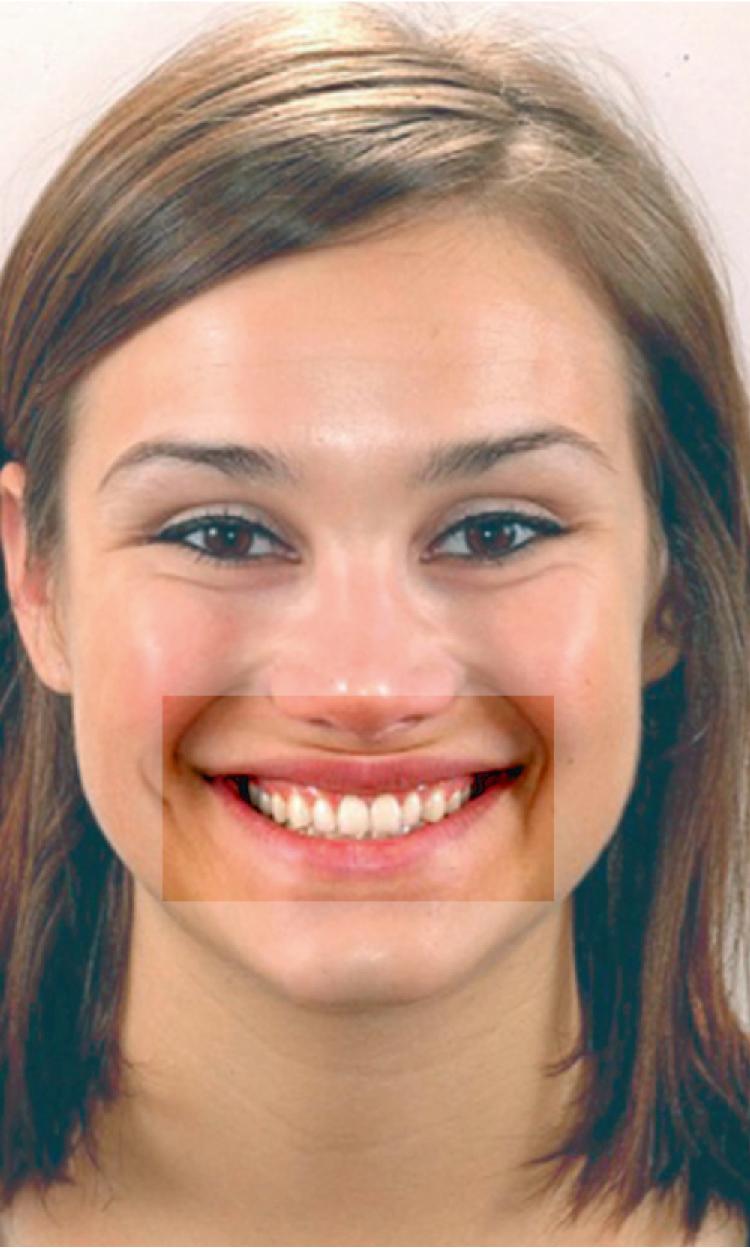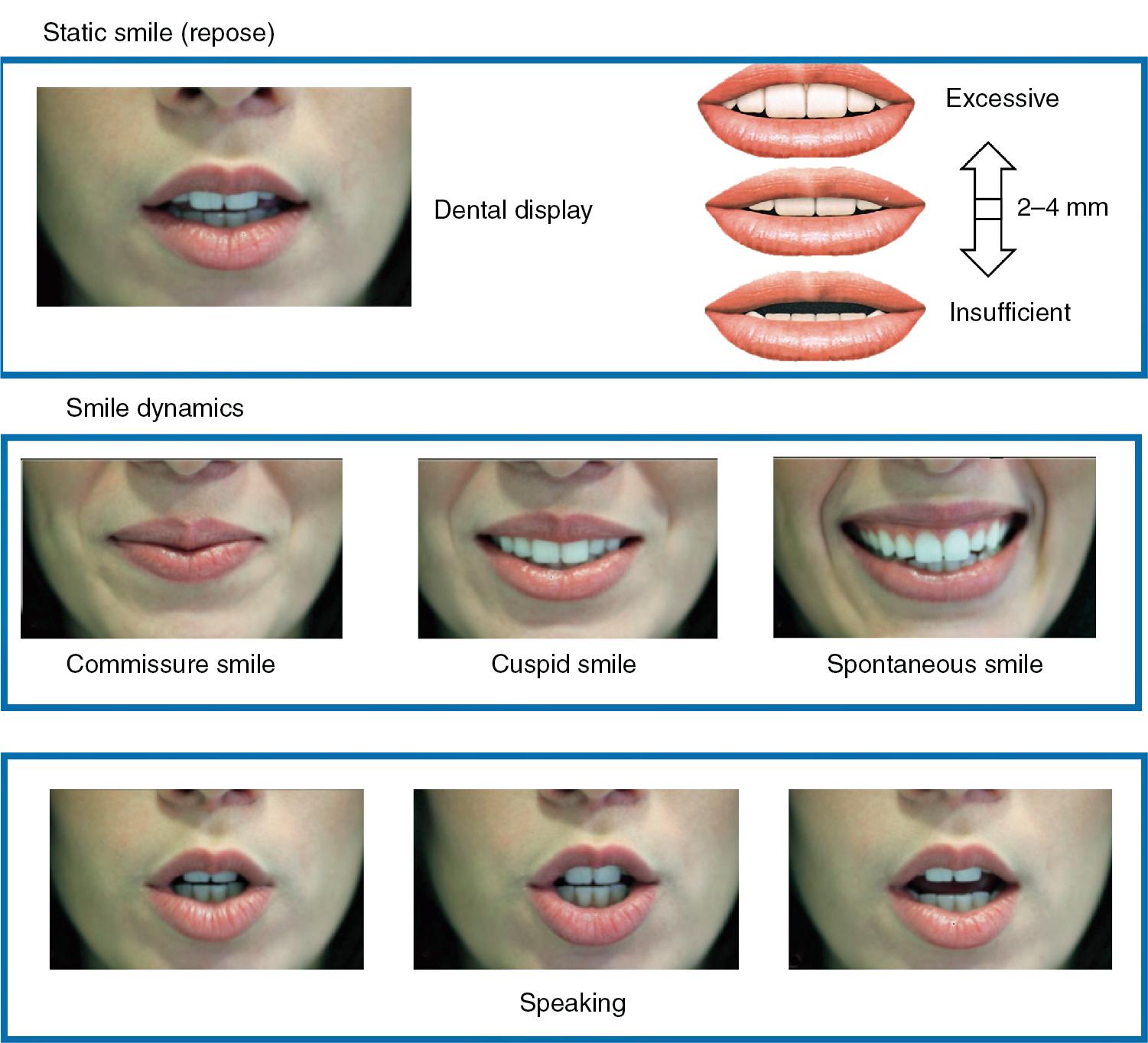Physical Address
304 North Cardinal St.
Dorchester Center, MA 02124
Of all the features of the face, it is the human smile that greatly influences the dynamic component of aesthetic appearance. In patients with dentofacial skeletal deformities, the analysis and treatment planning are, for the most part, static, and the only component that is typically included is the one-dimensional change in dental display between repose and smiling. The orthodontist and the surgeon have the ability to not only influence the vertical display, but the angulation of the dental arches in three-dimensional space. This chapter focuses on the subtle aspects of the smile as an aesthetic unit that can be influenced by orthodontic and surgical approaches ( Fig. 19.1 ). It is by incorporating these subtle characteristics in treatment planning that distinguishes the aesthetically appealing smile.

A smile is a form of facial expression when coordinated contraction of facial muscles that insert along the oral commissure occur. It is believed it takes activation of about 42 muscles to smile. Depending on which muscles are activated and the degree of activation, an individual can express various types of smiles, ranging from the rehearsed smile of portraiture photographs to the spontaneous smile of amusement.
Three basic smile patterns have been recognized ( Fig. 19.2 ). The “commissure smile” (“Mona Lisa smile”) is seen as an expected form of greeting when individuals meet each other in social situations. The commissures are pulled upward with or without showing the anterior dentition. In the “cuspid smile,” the upper lip itself is elevated, displaying the anterior dentition from canine to canine. Both the above types of smile can be forced and consciously controlled. The third smile, “spontaneous smile,” involves a complex coordination of muscles that not only includes the oral commissure but also extends to involve a wider range of facial expression, including the eyes. This smile can only occur as a genuine emotional response and cannot be rehearsed, except perhaps by professional actors and actresses.

The orthodontist and the surgeon have the challenge of planning treatment with regard to which smile pattern would achieve the best aesthetic outcome. Although the ideal planning would be based on the spontaneous, natural smile, it is difficult from a practical standpoint. Thus treatment planning is typically based on the second type, the cuspid smile.
Thus it is not only the elevation of the lip but also the reciprocal relationship of the exposure of maxillary anterior dentition that plays a significant role in defining the aesthetic anatomy of the smile. The proportions of the anterior dentition and their relationship to the adjacent dental unit defines an ideal, attractive smile.
It is essential to systematically analyze the morphology of the lip as it drapes the dentofacial skeletal from multiple positions: frontal, three-quarter, and profile. Additionally, as the lip is a dynamic component on a static skeletal framework, the standardized imaging sequence includes the lips in contact, in repose, and in smiling. To dynamically capture the position of the lips, a high-speed sequence of still photographs and video is obtained to allow the surgeon and the orthodontist to interpolate the full dynamic range for treatment planning.
Analysis of the smile in the frontal view includes the proportions of the lips as a subunit to the overall proportions of the face, the proportions of the anterior dentition, the symmetry of the lips and the dental arches, the dental midline relationships of the respective dental arches to the facial midline, the dental display at rest and during a dynamic smile, the smile arch, the buccal corridor space, and competence. The three-quarter view best demonstrates the relationship of the curvature of the dentition to the curvature of the lip and the lip strain that can occur with lip incompetence. The profile view best demonstrates the incisor inclination relative to soft tissues.
Become a Clinical Tree membership for Full access and enjoy Unlimited articles
If you are a member. Log in here